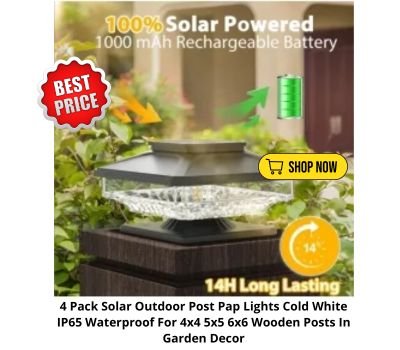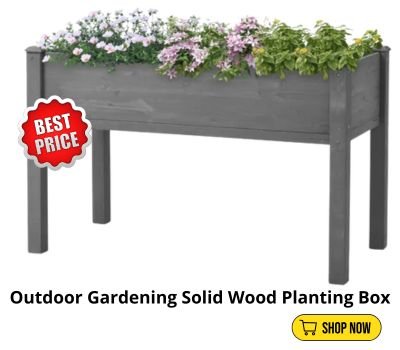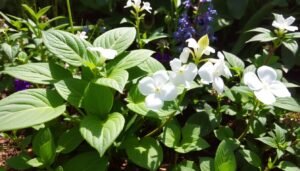Imagine this: You’re looking at your beautiful green lawn, proud of your hard work. Then, you spot it – a pesky bindweed growing among the grass. It’s like an unwanted guest that won’t leave, surviving despite your efforts. But what if I told you that you can remove weeds without using harmful chemicals?
Many common weed killers have chemicals that are bad for the earth and your lawn. By choosing natural weed control, you’re helping your garden stay healthy and green. Experts, like Amy Lentz from Colorado State University, say weeds can last for years in soil. For instance, bindweed seeds can stay in the soil for up to 60 years! With natural lawn care, you can get rid of these tough weeds without harming your lawn.
In this article, we’ll talk about ten safe and effective ways to manage weeds. Whether you’re pulling them out by hand, using vinegar from your kitchen, or using mulch, every method helps keep your garden free of weeds. These strategies are great for the environment too.
Let’s make a better choice for our yards. We’ll go over these natural methods for keeping your lawn looking great, without hurting the environment. Get ready to defeat weeds the safe way.
Pull Weeds by Hand
Pulling weeds by hand effectively controls them. Amy Lentz says removing young weeds takes out fully the root system, stopping regrowth. Checking your garden every other day makes weed pulling quicker by tackling young weeds early.
Young weeds pull out easier because of their weak roots. This shows why it’s crucial to act fast.

Benefits of Manual Weed Removal
Manual weed pulling has big pluses. It gets rid of weeds completely, roots and all. It’s also good for the earth because it avoids chemical use. Spending 5-10 minutes on weeding every day or two stops weeds from spreading.
By weeding regularly, your plants get more water and nutrients. Plus, weed-free compost won’t grow unwanted plants in your soil.
Tools to Make the Job Easier
Using the right tools makes weeding less hard. Tools like a hori hori knife can help remove weeds better. The best time for weeding is after rain, which makes the soil soft. Adding compost helps too, making weeding easier.
Hand weeding can be tough on your body. But, ergonomic tools make it easier and less tiring.
“Complete removal of the entire plant structure is essential for perennial weeds to eliminate their reproductive backup methods.”
Using Vinegar for Effective Weed Control
Vinegar is a natural option for getting rid of weeds. It has acetic acid, which destroys the weed’s cell walls. This makes them dry out and die. But, it’s important to note not all vinegars are the same for this job.

How Vinegar Works on Weeds
Regular household vinegar has about 5% acetic acid. Yet, vinegars made for killing weeds have between 20% to 30%. The more acetic acid, the better it is at killing weeds. This acid messes up how weed cells work, causing them to die quickly.
According to Kel Giard of Clean Air Lawn Care, it is crucial to apply vinegar directly to weeds, ensuring minimal contact with other plants to avoid damage.
Weeds that are young and small, particularly in the early leaf stages, are easier to kill with vinegar. While great for plants with broad leaves, vinegar might not work as well on grass or plants that grow back from roots.
Application Tips and Precautions
For vinegar to be most effective, apply it right. It works best in hot, sunny weather. Try using it in the morning or late afternoon when it’s not too hot. And, make sure it won’t rain for at least 24 hours to keep the vinegar in place.
- Wear personal protective equipment (PPE) when using vinegar with higher acetic acid concentrations (20% or 30%) to avoid skin and eye irritation.
- Use a spray bottle to target the weeds directly, avoiding contact with desirable plants.
- Combine vinegar with other organic weed removal methods, such as mulching or manual removal, to enhance overall effectiveness.
- If using a homemade vinegar weed killer, mix 1 gallon of white vinegar with 1 tablespoon of dish soap, and optionally, 1 cup of salt.
Vinegar might need to be applied more than once since it doesn’t kill root systems. Also, using too much can change the soil’s pH, affecting good soil microbes.
Vinegar is a broad-spectrum and surface-level solution for weed control. It means it can harm any plant it touches. So, you must be careful to only hit the weeds, protecting other plants in your garden.
Mulching to Suppress Weed Growth
Mulching stops weeds by blocking the sun they need to grow. A thick mulch layer stops weeds from getting sunlight and nutrients. This keeps your plants safe from invasive weeds. It’s vital to use mulching the right way for the best weed control. Using different mulches correctly can greatly benefit your garden.
Types of Mulch to Use
There are many mulch types to choose from, each with its own benefits:
- Organic Mulch: This includes straw, wood chips, and compost. They not only suppress weeds with mulch but also improve your soil when they break down.
- Black Plastic Mulch: Great for stopping yearly weeds. Yet, it makes checking water and air levels important because it blocks both.
- Geotextiles (Weed Barriers): These fabrics control yearly weeds. However, they might not stop all persistent weeds.
- Clear Plastic: Raises soil temperature well. But it doesn’t stop weeds since sunlight still reaches the soil.
How to Apply Mulch Effectively
Learning how to mulch properly is key for fighting weeds:
“A mulch layer up to 3 inches thick is best. This avoids cutting off oxygen to the soil, which can affect root growth.”
- Layer Thickness: A 2-3 inch thick layer of mulch works best. It controls weeds without harming plant roots.
- Cover Crop Residue: Mixing organic mulch with hand-weeding is a top way to control weeds.
- Spacing: Plant veggies close to decrease light for weeds. This helps prevent them from growing.
- Application Timing: Put mulch down early in the season. This reduces weed seeds sprouting and lessens the need for hand-weeding.

Using different mulching techniques and mulch types will keep your garden weed-free. Keeping up with maintenance and checks is important for using mulch to fight weeds effectively.
Boiling Water as a Non-Toxic Weed Killer
Boiling water weed control offers a fast, non-toxic way to deal with unwanted plants. Craig Elworthy from Lawnbright says that pouring boiling water on weeds shows instant results. It works great on hard surfaces like patios and driveways, ensuring you don’t harm good plants nearby.

But, it’s important to know that boiling water might not kill deep roots, like those of dandelions. If the roots aren’t destroyed, the weeds might grow back. So, this method works better on new or weak weeds and might not be as effective on older ones with deep roots.
There’s also a chance it could hurt the soil and plants near the weeds. The boiling water can damage soil health and may cause mold or fungus. Also, using boiling water safely means wearing the right gear to avoid burns. It’s an easy and cheap way to kill weeds, but you must be careful.
How to Solarize Your Soil to Eliminate Weeds
The soil solarization technique is a great way to get rid of weeds. It uses the sun’s power to heat the soil. This heat kills weeds and other pests in the soil. You do this by covering the soil with clear plastic during summer’s peak heat. This gets rid of weeds and harmful organisms in the top six inches of soil.
To start, make sure the soil is moist 12 inches deep but not wet. Clear out any plants and smooth the soil. The best time for this is from June to August. During these months, the sun can heat the soil to over 140 degrees Fahrenheit, killing pests.
Steps to follow:
- Moisten the soil well.
- Clear the area of plants and smooth it out.
- Put a clear plastic sheet tightly over the soil, avoiding air pockets.
- Leave the plastic on for 4 to 6 weeks. In cooler places, leave it up to 8 weeks.
Using two layers of plastic can trap more heat, raising the soil temperature by up to 50°F. While effective, tough weeds may need more than one solarization to die. Keep the soil dry during this time for the best results.
This technique doesn’t just kill weeds. It also makes the soil healthier. It increases nutrients and decreases harmful bugs. After solarizing, crops like wheat and eggplant may grow better. This method helps you prepare weed-free gardens successfully. It creates a better environment for growing plants.
Creating a Newspaper Barrier for Weed Control
Creating a newspaper weed barrier is a green and budget-friendly way to stop weeds in your garden. By using old newspapers or cardboard, you stop sunlight from reaching weed seeds. This lets your plants grow well without weed competition.
Steps to Set Up a Newspaper Barrier
To set up a newspaper weed barrier, just follow these easy steps:
- Prepare the Garden Bed: Clear your garden bed of any big weeds or trash. Then, water the soil well.
- Layer the Newspaper: Place newspapers thickly, covering all but your plants’ roots. Make sure the edges overlap to keep weeds away.
- Wet the Newspaper: Soaking the newspapers helps them stick and start to break down.
- Apply Mulch: Put mulch, like shredded leaves or wood chips, over the newspapers. This blocks weeds and keeps the soil moist.
Benefits and Limitations
Benefits:
- Natural Weed Suppression Methods: Newspapers offer a safe, sustainable way to fight weeds without chemicals.
- Improved Soil Health: Breaking down, newspapers improve the soil and bring in helpful organisms.
- Cost-Effective: Since many newspapers are free, this method saves money.
Limitations:
- Temporary Solution: Newspaper barriers have to be redone over time because they break down.
- Labor-Intensive: Setting up these barriers takes some work, like cleaning the garden bed and laying the materials.
Utilizing Salt to Get Rid of Weeds
Using salt to kill weeds is an eco-friendly way. It works by pulling water from the weed’s cells, causing them to die. This method is simple but must be used carefully to not harm your soil or wanted plants.
How Salt Affects Weed Growth
Salt stops weeds by messing with the water inside their cells. When you put it on weeds, the sodium makes the plant dry out and die. You might see the leaves wilt in hours, but getting rid of the weed fully can take up to 10 days. Little weeds are easier to kill with salt, but bigger ones might need more doses.
Safe Application Methods
To kill weeds without hurting other plants, apply salt carefully. For delicate places, mix one cup of salt with a gallon of water. For tougher spots, you can use more salt. A spray bottle helps you hit just the weeds, keeping the soil safe. Don’t spray everywhere to avoid making the ground barren.
In places like pavement cracks, you can use a stronger mix without hurting plants. Watch these spots to make sure the salt doesn’t spread to where you don’t want it. For an even greener choice, try pulling weeds by hand.
Applying Corn Gluten Meal for Prevention
Corn gluten meal works well to stop many weeds, like crabgrass, before they start. It was found by mistake at Iowa State University in 1986. People have used it to stop weeds naturally for more than 30 years.
For the best results, apply corn gluten meal at the right time. Early April is perfect, when forsythias bloom. This is when the soil is about 50 degrees Fahrenheit, which is also when weeds like crabgrass start to grow.
Spread 20 to 40 pounds of corn gluten meal for each 1,000 square feet. This gives your lawn 2 pounds of nitrogen, which is good for the grass but stops weeds from growing. Make sure to apply it when the weather is dry. Rain can make it less effective.
If it stays dry for 48 hours after applying, the corn gluten meal works better at stopping weeds. It has a lot of protein, 60% to 65%, which helps it act like a herbicide. You might notice fewer weeds after one use, but using it for a few years can reduce weeds by 90%.
Wait about four to six weeks before planting new grass seeds after using corn gluten meal. It can stop the seeds from growing properly.
Knowing how and when to use corn gluten meal can help you keep your lawn looking great without harmful chemicals. It’s a smart way to fight weeds organically.
Making a Homemade Weed-Killer Solution
Making your own weed killer is easy and effective for getting rid of unwanted plants. With a DIY solution, you can avoid harsh chemicals and keep your garden beautiful.
Recipe and Ingredients
Common natural weed killer recipes use everyday items like vinegar, salt, and dish soap. These ingredients help dry out and kill the weeds. Try this recipe:
- 1 gallon of white vinegar
- 1 cup of salt
- 1 tablespoon of dish soap
How to Apply for Best Results
For best results, use your weed killer on a sunny day without much wind. This makes sure the solution works well to dry out the weeds. Follow these steps:
- Pick a sunny day to do this. Sunlight helps the process work better.
- Put the mix in a spray bottle to make it easy to apply.
- Spray the weeds well, covering every leaf.
- Apply again when needed, like after it rains.
DIY weed killers can work really well, up to 80% success, especially on small, yearly weeds. Remember, being persistent and picking the right time to apply it is key.
Using Ground Cover Plants to Keep Weeds at Bay
Ground cover plants provide a natural way to fight weeds. They grow thick, blocking sunlight and nutrients from reaching unwanted plants. This method helps keep your garden free of weeds in a green way. They also prevent soil erosion, which is great for sloped areas or places with lots of rain.
Lamb’s ear is a good choice for many gardens. It grows up to 6 inches tall and can spread 24 inches wide. For smaller areas, creeping mazus is perfect. It stays about 1 inch high but covers 6 to 12 inches of ground. These plants not only block weeds but also make your garden look nice. Creeping thyme is another great option, spreading up to 12 inches wide.
Ground covers also keep the soil moist by reducing water evaporation. They can improve your garden’s soil, making it richer. Plus, they attract bees and butterflies. Gardens with a variety of ground covers see a 30% boost in these helpful visitors. Creeping phlox, for example, adds color and helps with weed control.
Choosing the right ground cover plants can really change your garden for the better. Yarrow and bugleweed are two more options to consider. They can cut down on how much time you spend pulling weeds by a lot. With the right plants, you can enjoy a lovely, weed-free garden.








